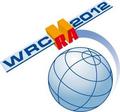 Ondanks alle commerciële gevechten om delen van het spectrum, valt er zo af en toe toch nog iets toe aan de radio-amateurs. Begin dit jaar mochten we 70MHz in gebruik nemen, de WRC12 dreigt af te sluiten met een 500kHz toewijzing en aan de horizon gloort 5MHz als nieuwe amateurband.
Ondanks alle commerciële gevechten om delen van het spectrum, valt er zo af en toe toch nog iets toe aan de radio-amateurs. Begin dit jaar mochten we 70MHz in gebruik nemen, de WRC12 dreigt af te sluiten met een 500kHz toewijzing en aan de horizon gloort 5MHz als nieuwe amateurband.
Over die 5MHz schreven we al vele malen, maar dat leek allemaal ver weg. Iets met soort van kristalgestuurde D-kanaaltjes in Amerika, maar dan op 5MHz. Maar toen pakte Cuba het voortvarend op en plempte 5MHz op de agenda van de WRC12 met het verzoek om het op de agenda van de WRC15 te zetten. En dat is aangenomen. Volledige Engelse tekst hieronder, met Nederlandse toelichting aan het eind:
Resolution COM6/12 (WRC?12)
Possible allocation to the amateur service on a secondary basis at around 5300kHz
The World Radiocommunication Conference (Geneva, 2012),
considering
a) that amateur stations are regularly used for emergency radiocommunications in the event of hurricanes, typhoons, floods, fires, volcanic eruptions, earthquakes and other disaster situations;
b) that Recommendation ITU?R M.1042?3, on disaster communications in the amateur and amateur-satellite services, encourages the development of such services capable of providing radiocommunications in the event of natural disasters, and recommends that their networks be robust, flexible and independent of other telecommunication services and capable of operating from emergency power;
c) that communications in the HF bands allocated to the amateur service play a major role in work to mitigate catastrophes and in the delivery of communications in support of relief operations in areas where the telecommunication infrastructure is weak or has collapsed;
d) that the various frequency bands allocated to the amateur service are contained in the Table of Frequency Allocations in Article 5 of the Radio Regulations,
recognizing
a) that radiocommunication in the HF bands is dependent on propagation factors, with the result that frequencies in different bands have to be used to maintain stable communication for a relatively sustained period of time, with frequency changes in the case of communications with different correspondents located at very different distances;
b) that it is essential that, in all cases, the maximum usable frequency (MUF) should not be excessively far from the next band allocated to the amateur service, so as to permit the setting up of communications in this band using typical amateur service antennas and power levels;
c) that, in the current allocations to the amateur service in the HF bands, there is a significant jump, which causes many problems in terms of communication when the MUF falls below 7MHz and the lowest usable frequency (LUF) is above 4MHz, with the result that amateur stations would need to be able to access spectrum at around 5MHz in order to fulfil their communication functions, particularly when they are engaged in providing emergency communications in response to disaster situations,
noting
a) that the band 5250-5450kHz is allocated to the fixed and mobile services, except aeronautical mobile, on a primary basis;
b) that an allocation of an appropriate amount of spectrum, not necessarily contiguous, to the amateur service at around 5300kHz would be adequate to better satisfy its needs associated with use for providing communications in disaster situations and during relief operations;
c) that the band 10100-10150kHz is already allocated to the fixed service on a primary basis and to the amateur service on a secondary basis, and that effective use of both services has been possible,
resolves to invite WRC?15
to consider, based on the results of the ITU?R studies referred to in invites ITU?R below, the possibility of making an allocation of an appropriate amount of spectrum, not necessarily contiguous, to the amateur service on a secondary basis within the band 5250-5450kHz,
invites ITU?R
1 to study spectrum requirements for a secondary allocation to the amateur service within the band 5250-5450kHz;
2 to carry out sharing studies on the impact to other services currently allocated in the band referred to in invites ITU?R 1 and in the adjacent bands;
3 to complete studies in time for WRC?15.
Kortom, in goed Nederlands: Men vindt het heel belangrijk dat amateurs zich nuttig maken als ergens een ramp plaatsvindt, en dan helpt het een frequentie te hebben waar je wat aan hebt, als de MUF (hoogst bruikbare frequentie) niet al te hoog is, en die wil nog wel eens onder de 7 zakken, terwijl de LUF (Laagst bruikbare frequentie) dan boven de 4 zit. En dan heb je aan 40m niets, maar aan 80 dus ook niet. Aangezien primaire en secundaire diensten elkaar niet in de weg lijken te zitten op de 30m band, zou dat op de 60m band dus ook wel naast elkaar kunnen bestaan. Dus, heren amateurs, kijk wat je nodig hebt aan bandbreedte zo tussen de 5250 en 5450kHz, en doe een voorstel voor de wereld radio conferentie van 2015. Dat is waar de tekst op neerkomt.
Die toewijzing is er dus voorlopig nog niet, maar er wordt tenminste wél nu over nagedacht. Met de optie dat we daar na 2015 een extra band aan overhouden. Nog een paar nachtjes slapen, maar dan heb je ook wat…

